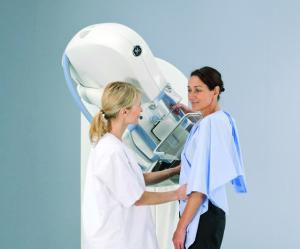by
Lauren Dubinsky, Senior Reporter | September 04, 2014

Courtesy of GE Healthcare
GE Healthcare announced yesterday that their SenoClaire tomosynthesis system received FDA approval. The system was created in collaboration with Massachusetts General Hospital.
According to the company, SenoClaire utilizes a unique "step-and-shoot" image acquisition method instead of the traditional "sweeping" method that other systems on the market use. It stops at nine different positions to take an image, which prevents motion blur and ultimately improves the image sharpness.
"The step-and-shoot helps ensure that there is no movement that would alter the image or produce blurring," Catherine Tabaka, chief marketing officer of detection and guidance solutions at GE, told HCB News.



Ad Statistics
Times Displayed: 77155
Times Visited: 2690 Ampronix, a Top Master Distributor for Sony Medical, provides Sales, Service & Exchanges for Sony Surgical Displays, Printers, & More. Rely on Us for Expert Support Tailored to Your Needs. Email info@ampronix.com or Call 949-273-8000 for Premier Pricing.
Another thing that sets SenoClaire apart from other systems is the fact that there is no increase in radiation dose from a 2-D mammogram to the 3-D view, said Tabaka. They achieve that with a combination of three technologies — a high-quality X-ray beam, a reduced scatter radiation feature and a fast and sensitive detector.
"The combination of those three is what allows the best possible quality and the best use of the X-ray — there is no waste of the X-ray beam," said Tabaka.
SenoClaire is compatible with GE's Centricity PACS with their Universal Viewer and supports the DICOM standard that can be read by the major PACS systems. Clinicians can see their patient's longitudinal record when SenoClaire is paired with the Centricity PACS and Centricity Clinical Archive solution.
It was first introduced a year ago in Europe, Australia, Latin America, Southeast Asia and the Middle East and 180 units have been installed to-date. Tabaka said that their U.S. customers are very excited that the system received approval.
"We're striving to get as much information as possible in front of the clinician as early as possible," she said. "We want to make sure that they can detect early and that they have a high degree of confidence in the diagnosis that they provide."

